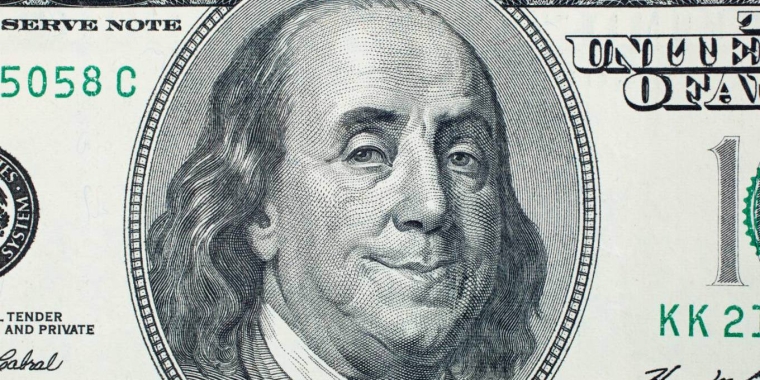
US markets are closed for a public holiday, seeing light trading conditions. S&P500 futures are down slightly and US Treasury futures are consistent with a 3bps lift in the 10-year rate from last week’s close to 3.97%. In currency markets, the USD is broadly stronger and JPY, AUD and the NZD have all underperformed, seeing the NZD trade sub 0.62 overnight.
Yesterday, in early Asia trading there was no notable market reaction to the weekend news of Taiwan’s Presidential election outcome, which saw the incumbent Democratic Progressive Party winning a third term but losing its majority in the legislature. The win by pro-Independence candidate Lai Ching-te was well flagged by the polls and ensures that ongoing tensions between China and Taiwan will continue.
The PBoC maintained the 1yr lending rate at 2.5%, against widespread expectations for a 10bps cut, likely related to concerns that a further cut would have an undesired negative impact on the yuan. Throughout the holiday season, the central bank has been fixing the CNY reference rate on the strong side of expectations, lifting the premium to market estimates a little in 2024 to date. There is also the case that lower rates won’t necessarily stimulate credit demand and quantitative measures are likely to have a better impact on supporting the economy. After the announcement, the yuan strengthened, taking USD/CNH down to 7.1750, before weakening back to 7.19 and it currently sits with a 7.18 handle.
Euro area economic data continue to underwhelm. The preliminary estimate of Germany GDP showed a 0.3% contraction in Q4 although Q3 was revised up a tick to 0%, thus avoiding two negative quarters in a row. That said, over the full year the economy contracted 0.3%, consistent with economic recession conditions. Industrial production in the euro area fell by 0.3% m/m in November, its third successive monthly fall, taking the annual drop to 6.8%.
Despite the very weak economic backdrop in the euro area, ECB hawks Holzmann and Nagel ran the line that it was premature to discuss monetary policy easing. Holzmann admitted that the euro area economy was running weaker than expected but noted geopolitical conflicts risk disrupting supply chains and energy markets, keeping pressure on inflation. He said “we should not bank on the rate cut at all for 2024”.
The hawkish soundbites follow ECB Chief Economist Lane’s weekend comments that also played to a delayed policy response to recessionary conditions because of too-high inflation, viz “a false dawn, too rapid a recalibration, can be self-defeating”. He noted previous high inflation episodes where premature easing has triggered another inflation wave. Markets disagree and price in around 150bps of cuts this year, with the first rate cut fully priced for April, but the hawkish commentary has worked to push up European rates since last week’s close, with Germany’s 2-year rate up 6bps and 10-year rate up 5bps, but this move having no positive impact on the euro.
Against a backdrop of a broadly stronger USD, EUR has been flat around 1.0950. JPY, the NZD and AUD have been the worst performers. Higher global rates have helped push up USD/JPY by 0.6% to 145.70. Fading expectations that the BoJ will hike anytime soon pushed Japan’s 2-year rate back into negative territory yesterday for the first time in six months. The NZD continues to retreat following the exaggerated strength seen late last year and has traded below 0.6185 overnight and currently sits around 0.62. The AUD hadn’t fared much better, down at 0.6660 and with NZD/AUD slipping a little to 0.9310. The NZD’s underperformance sees it weaker on most crosses but flat against JPY at 90.4.
NZ rates were lower across the board yesterday, with the 2-year swap rate down 6bps to 4.68% and the 10-year rate down 2bps to 4.34%. NZGB yields were down 2-4bps across the curve, with a modest steepening bias. Against a backdrop of upward pressure on global rates, the Australian 10-year bond future is up 3bps in yield terms since the NZ close and this will set the tone for early trading in NZ.
In the day ahead, the NZ quarterly survey of business opinion will be released for Q4, likely to show a sharp lift in business confidence, as per the ANZ business outlook survey, with confidence lifted by the election of a more business-friendly government. Our interest is more in the capacity and inflation indicators. After the sharp easing in the difficulty finding labour indicator, it will be interesting to see whether pressures have eased further.
On the global calendar, key releases are Canadian CPI data and UK labour market data, including wages. But there will be significant interest in what Fed Governor Waller, one of the more respected FOMC members, says on monetary policy overnight.

We welcome your comments below. If you are not already registered, please register to comment
Remember we welcome robust, respectful and insightful debate. We don't welcome abusive or defamatory comments and will de-register those repeatedly making such comments. Our current comment policy is here.